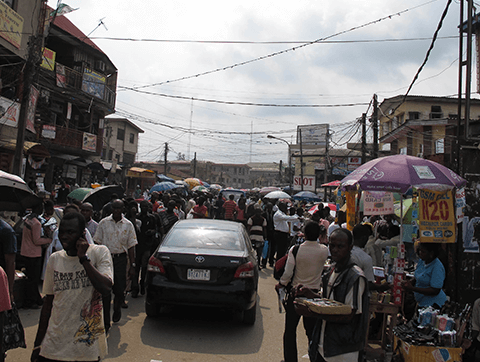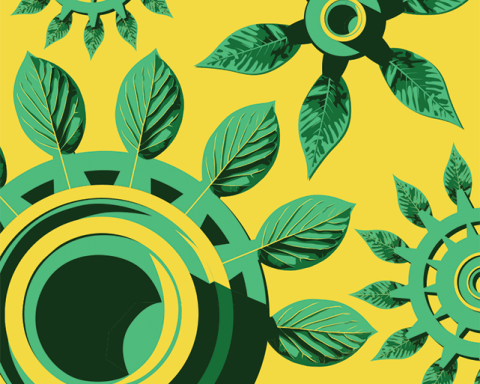Despite being a vast continent of forests, fields, farmland, mountains and ice, North America is an urban society.
In Canada, for example, 82 per cent of the population now lives in cities. The percentage of urban dwellers is slightly higher in the United States at 84 per cent, while Mexico sits at 78 per cent. According to the United Nations Department of Economic and Social Affairs, which tracks global urbanization trends, Canada and the U.S. now rank among the Top 50 urbanized countries – ahead of Germany, England, Italy and other Western European states.
Some cities may be experiencing booming growth, but public investment in urban infrastructure such as sewage and solid waste management, energy production and distribution, transit, and other built structures has lagged. As noted in a recent Canadian Centre for Policy Alternatives study, this growing urban infrastructure deficit is impossible to ignore:
“The evidence is clear, both in the statistics, and in the everyday experience of Canadians in every part of the country: in spine-jarring streets and highways; in mind-numbing and catastrophically wasteful traffic jams … in the struggles of rapidly growing communities to keep up with the need for the basic nuts and bolts of urban civilization.”
The study and other research show governments have responded to the infrastructure deficit during times of crisis, spending billions with economic stimulus programs to keep the construction industry going during economic downturns or when alarming episodes of crumbling expressways and sewage floods make headlines.
At the same time, a less obvious but incredibly valuable asset of cities – green infrastructure like urban forests, local parks, healthy waterways and beaches – has received comparatively little political attention or government funding, despite its enormous value to urban dwellers.
Natural ecosystems and vegetative technologies like green roofs and engineered wetlands extend the life of many types of traditional infrastructure by assisting, for example, with storm water management. They also provide a range of additional co-benefits that improve the health and well-being of urban communities. This includes reduced smog, enhanced habitat for biodiversity like songbirds and insect pollinators, increased workplace productivity, and even psychological and restorative benefits for urban dwellers, such as stress relief.
Yet, while leafy neighbourhoods still exist in older parts of major cities, such as Toronto and Chicago, most remain largely deforested. Experts have determined that a minimum 30 per cent forest cover is required to maintain a healthy local ecosystem, yet only 18 per cent of Toronto and an abysmal 5 per cent of some of its bedroom communities are covered in trees. Indeed, despite their critical value as natural assets, forests and other elements of green infrastructure continue to be dug up, drained and paved over to make way for more roads, strip malls and subdivisions.
The consequences of this decline and degradation are far reaching. They include higher built infrastructure costs associated with managing storm water and greater vulnerability to natural disturbances such as floods and storms, as Hurricane Sandy demonstrated. Furthermore, new research also shows that people living in neighbourhoods lacking in mature trees and other green infrastructure face increased depression and other health risks.
A recent U.S. Forest Service study found that widespread infestation of urban forests and tree-lined streets by the emerald ash borer, an invasive insect, has not only killed tens of millions of urban trees, but is contributing to higher rates of death from cardiovascular and lower respiratory tract illness among urban dwellers. These are the first and third most common causes of death in the U.S.
The direct causal relationship between trees and human health is not fully understood, but scientists believe people living in urban areas are less active, suffer from greater stress levels and are exposed to poorer air quality in neighbourhoods lacking green infrastructure. Conversely, trees are so efficient at removing airborne pollutants like carbon monoxide, lead and nitrogen dioxide that Columbia University researchers estimate for every 343 trees added to a square kilometre, asthma rates in young people drop by about 25 per cent.
And let’s not forget greenhouse gases. Another recent study by the U.S. Forest Service found that America’s urban forests store an estimated 708 million tons of carbon, an environmental service with an estimated value of $50 billion. Annually, net carbon uptake is estimated at 21 million tons, representing $1.5 billion in annual economic benefits.
While higher levels of government have yet to catch on to the enormous value of sustaining and growing the stock of green infrastructure in our cities, leadership is happening at local levels. For example, the David Suzuki Foundation and more than a dozen local community groups have launched a cheeky new campaign to create Canada’s first “Homegrown National Park” in downtown Toronto. This new crowdsourced green urban corridor will be located along one of the city’s most notable “lost rivers,” which now lies buried beneath asphalt and concrete. The project aims to enhance, restore and create urban green space and other green infrastructure through planting native trees and shrubs, cultivating bird- and bug-friendly gardens, and growing food in backyards and on balconies.
Continuing to ignore the green infrastructure needs of our cities, such as local parks and naturalized school grounds, is shortsighted. Green spaces complement traditional infrastructure, provide a multitude of ecological benefits and contribute to the health and well-being of urban populations.






